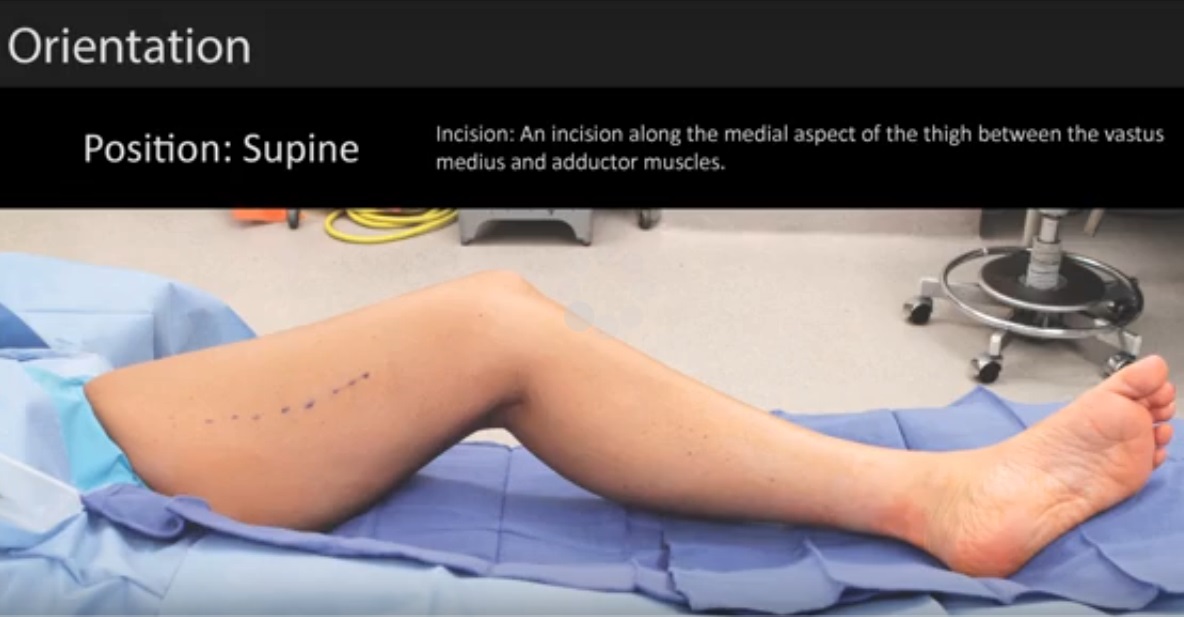Saphenous Nerve Release
Standard Edition (150401.150403)
Courtesy: Authors: Susan E. Mackinnon, Andrew Yee Affiliation: Washington University School of Medicine Division of Plastic Reconstructive Surgery, Department of Surgery, Saint Louis, MO Peripheral Nerve Surgery: http://nervesurgery.wustl.edu
Entrapment of the saphenous nerve is probably under-recognized and presents with numbness/pain in the infrapatellar region and the medial aspect of the lower leg. The vastoadductor intermuscular septum is responsible for entrapment symptoms as it forms the anterior fascia of the adductor canal, deep to the sartorius muscle. The femoral vessels and saphenous nerve have a course within this canal and the nerve may anteriorly pierce through the intermuscular septum. Decompression of the saphenous nerve involves the release of the vastoadductor intermuscular septum. In this case, the patient presented with severe pain in the lower extremity and diagnosed with complex regional pain syndrome. Her neuropathic pain began seven-years-ago following a revision knee operation for knee stiffness. The patient described the regions of neuropathic pain on the lateral aspect of the foot, lateral aspect of the lower leg, and medial aspect of the thigh. Provocative tests, specifically the scratch collapse test with ethyl chloride, identified provocation in the following order: superficial peroneal nerve, common peroneal nerve, and saphenous nerve. Release of the superficial peroneal nerve, common peroneal nerve, and saphenous nerve were elected. This video details the specifics for the saphenous nerve release.

Leave a Reply